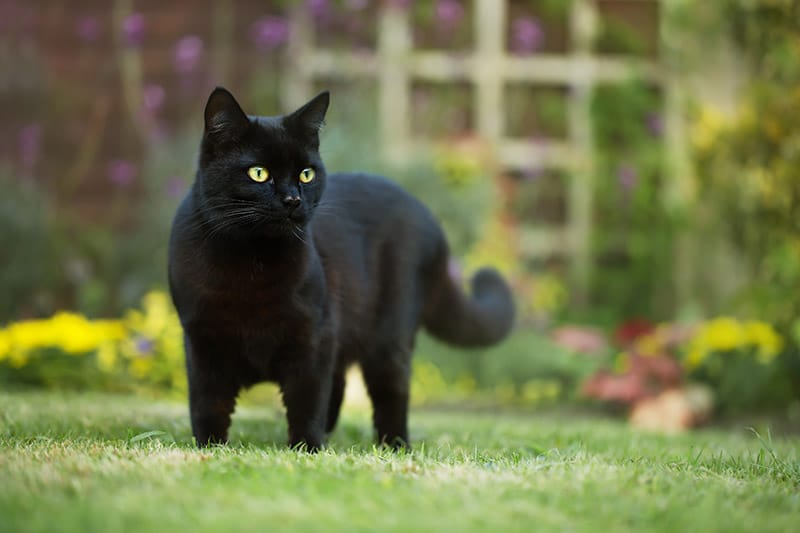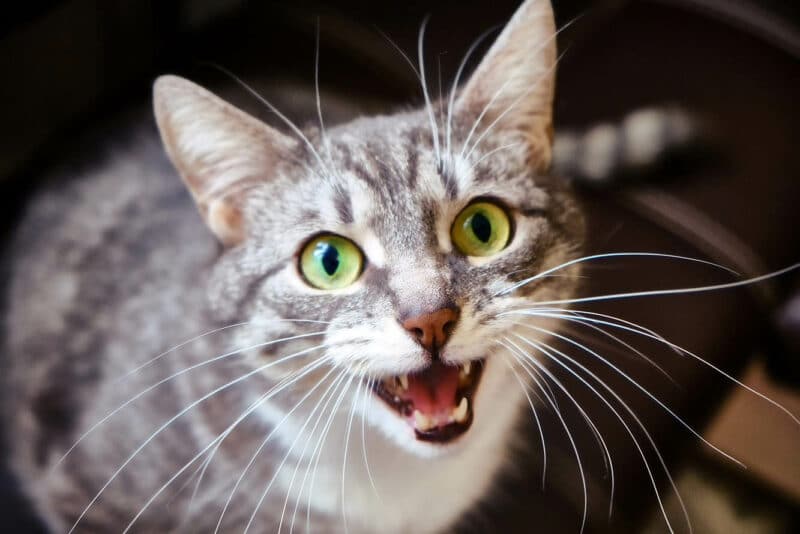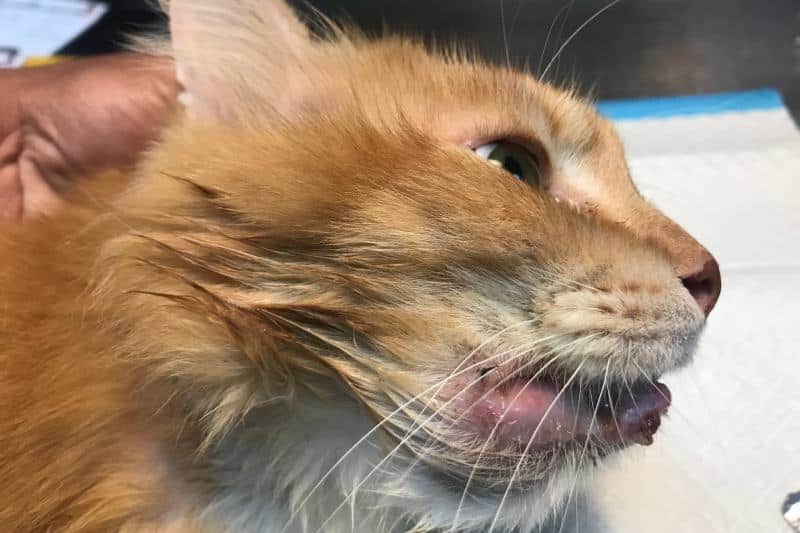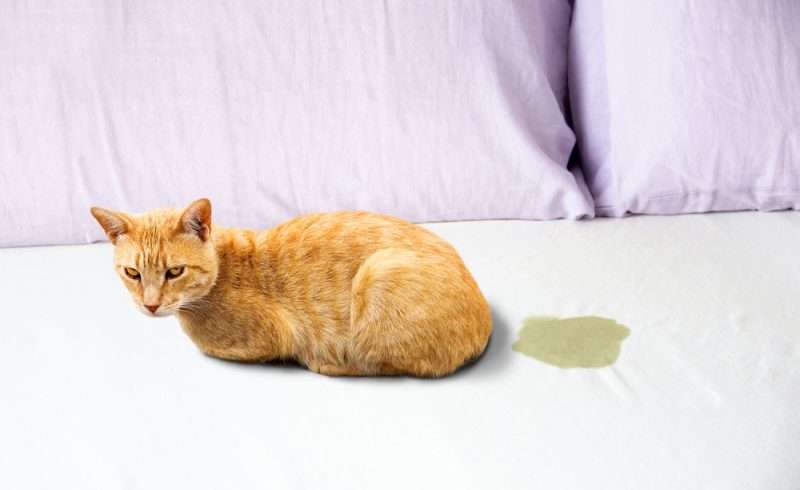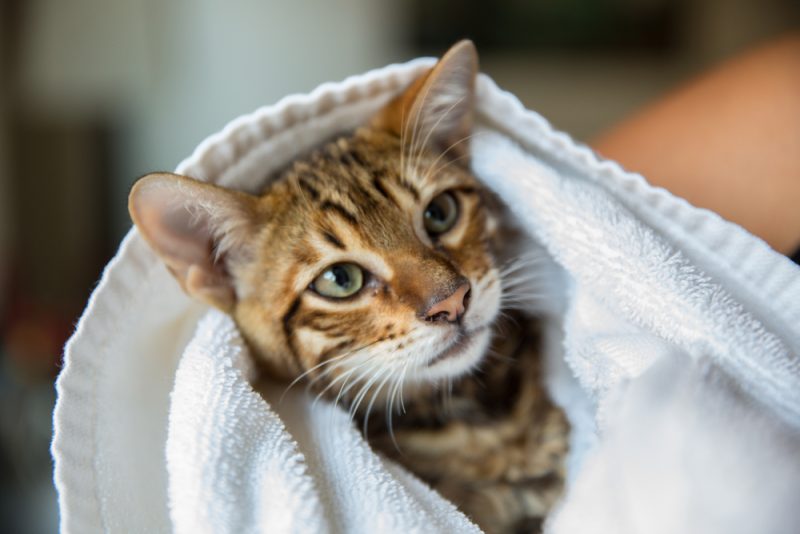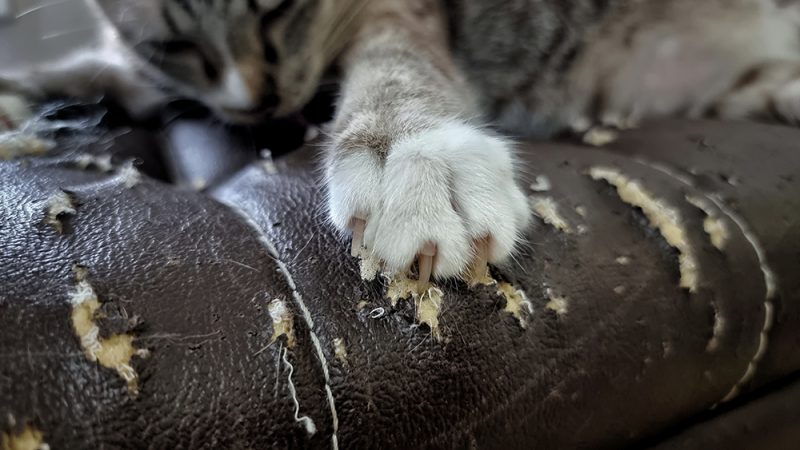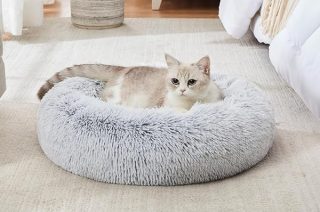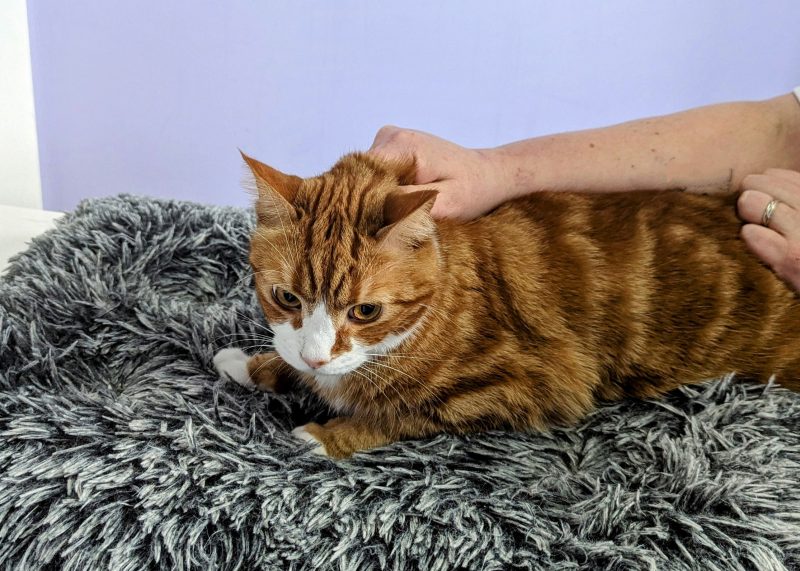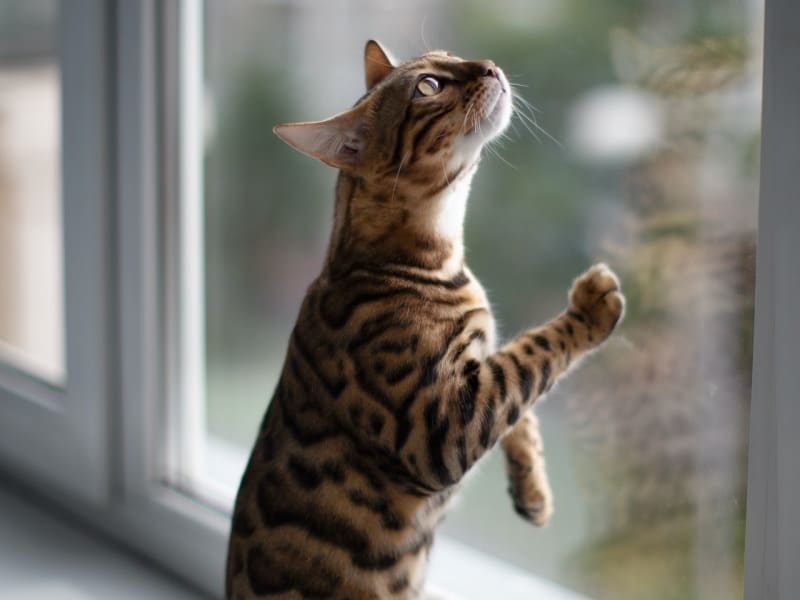In this article
As cat parents, we must keep our pets healthy and safe. Much goes into caring for a cat, but one of the most controversial subjects is whether to let your cat go outside.
Some believe that cats are happiest outdoors, while others don’t want to risk their cats encountering injury or even death, not to mention the detrimental effect cats have on local wildlife, rodents, and birds.
Regardless of how you feel about the outdoor cat debate, we can all agree that the essential part of allowing a cat to go outside is ensuring their safety, which is possible to do, though it requires a bit of work.
Here are several tips that should help you keep your cat safe while they are outside.

Dangers of the Outdoors: The Average Lifespan of Outside Cats
Unfortunately, cats that are let outside, particularly without any safety precautions, tend to have an average lifespan of as little as 2 to 5 years compared to indoor cats, which average 10 to 15 years or longer 1.
Reasons that outdoor cats have a lower lifespan and why veterinarians would prefer people to keep their cats inside include:
- They can get hit by motor vehicles.
- They can acquire infectious diseases from wildlife and other cats.
- They can get attacked by predators.
- They can become injured through fights with other cats.
- They can pick up infectious diseases from other cats.
- They can become lost and possibly picked up by animal control authorities.
- They can become infested by parasites, which also carry diseases.
- They can ingest toxins like rat poison, toxic plants, or antifreeze.
- Other people might steal, injure, or kill the cat.
- Cats hunt local wildlife, which can include threatened species.

How to Keep a Cat Outdoors Safely
If you utilize one or more of the following ideas, your cat can enjoy exploring the outdoors with less chance of encountering certain dangers or hurting other animals.
1. Spay or Neuter Your Cat

Before you consider allowing your cat outside, you must have them spayed or neutered. Having your cat either becoming pregnant or getting other cats pregnant will contribute to the homeless cat population, increase your cat’s risk of contracting infectious diseases through mating and fighting with other cats, and increase their urge to roam further in search for a mate.
2. Ensure That They Get Vaccines and Parasite Prevention
You should also get your cat vaccinated. These vaccines are essential in preventing your cat from picking up an infectious disease. Feline leukemia virus (FeLV) and feline immunodeficiency virus (FIV) are both highly infectious and potentially fatal viruses. In most countries, a vaccine against FeLV is available, alongside other illnesses, such as feline panleukopenia, feline herpesvirus-1, and feline calicivirus. These vaccines are called core vaccines and are recommended particularly for outdoor cats. There’s also the risk of deadly rabies, which can be transferred to people and is not curable.
Your vet can provide your cat with flea-and-tick products and treatment for intestinal parasites as a preventative measure, which is necessary for any cat going outside.
If you need to speak with a vet but can't get to one, head over to PangoVet. It's an online service where you can talk to a vet online and get the advice you need for your pet — all at an affordable price!

2. Have Them Wear Cat ID
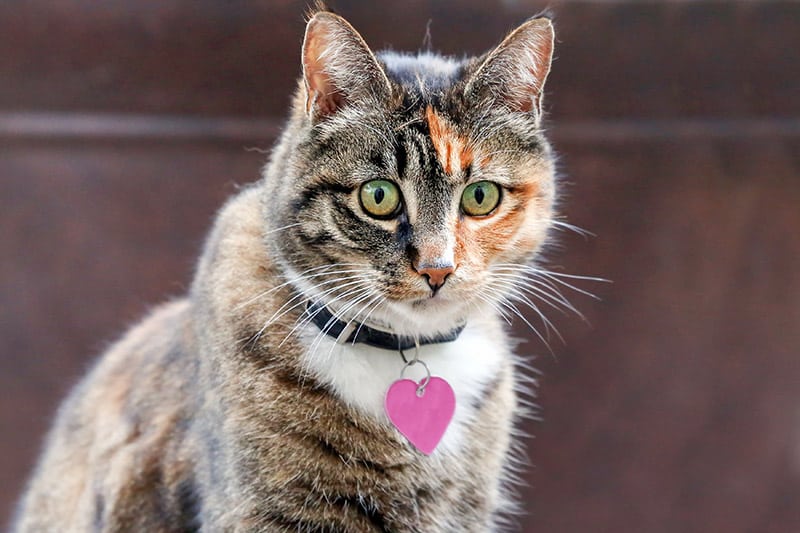
It’s critical that you have a form of ID on your cat. We recommend going with an ID collar and a microchip.
The collar must be a breakaway collar, which will break open if it gets stuck on something, so it keeps your cat from becoming trapped and badly injured. You’ll want to invest in an ID tag with your contact information so if your cat is lost, a good Samaritan can get in touch with you.
Getting your cat microchipped is an excellent backup if your cat does manage to get their collar off. Veterinary clinics and rescue organizations scan any stray cat brought in, so they can reach out to you if your cat is picked up.
Microchipping isn’t that expensive and doesn’t cause your cat any significant or lasting pain or discomfort, except for the very second it’s administered, and most cats do not object to it. It’s about the size of one grain of rice and is injected under your cat’s skin between the shoulder blades.
4. Give Your Cat a Curfew
Nighttime exploration brings in more hazards, particularly with predators like owls and coyotes. It’s also more challenging for drivers to spot a cat on the road until it’s too late.
You can use treats to entice your cat to come in if they aren’t happy about going inside at the end of the day.
5. Consider Where You Live
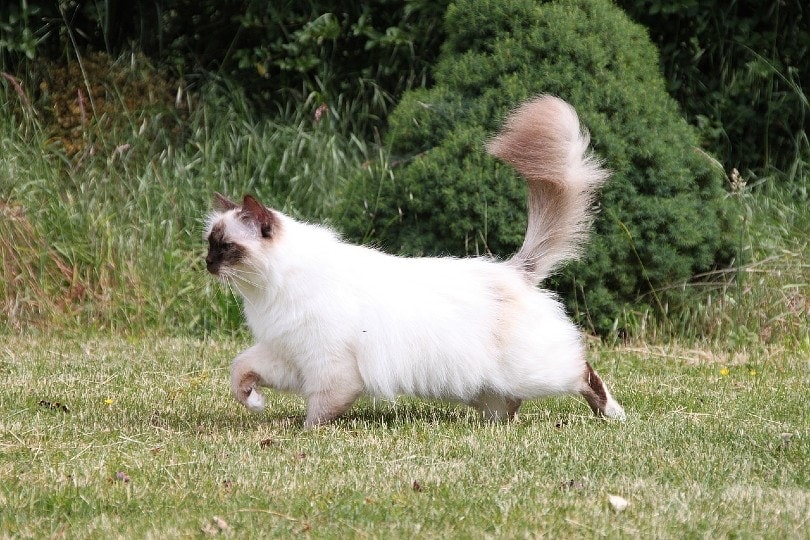
Your immediate environment is a huge factor in allowing your cat to go outside. If you live near a busy road or have a cat-hating neighbor or many loose dogs are around, you should reconsider allowing your cat outside.
There are also toxic plants to be aware of. You can use this ASPCA list of toxic plants to gauge whether your home and garden are safe for your cat.
There are risks no matter where you live because even in rural areas, there’s the possibility of predators. But living in a rural area can be safer for cats than in an urban setting.
6. Have Them Wear a Bell or Collar Cover
The issue with cats killing birds and wildlife is not the cat’s fault. It’s a purely instinctual reaction; they can’t help but do what they’re born to do.
But as a cat parent, you must ensure that your cat isn’t killing everything that moves while they’re outdoors. Putting a bell on the collar can help warn birds and animals of your approaching cat. Collar covers may also prove effective for warning birds because of the bright colors. It also has the added advantage of making your cat more visible to drivers.
7. Consider Setting Up a GPS Tracker
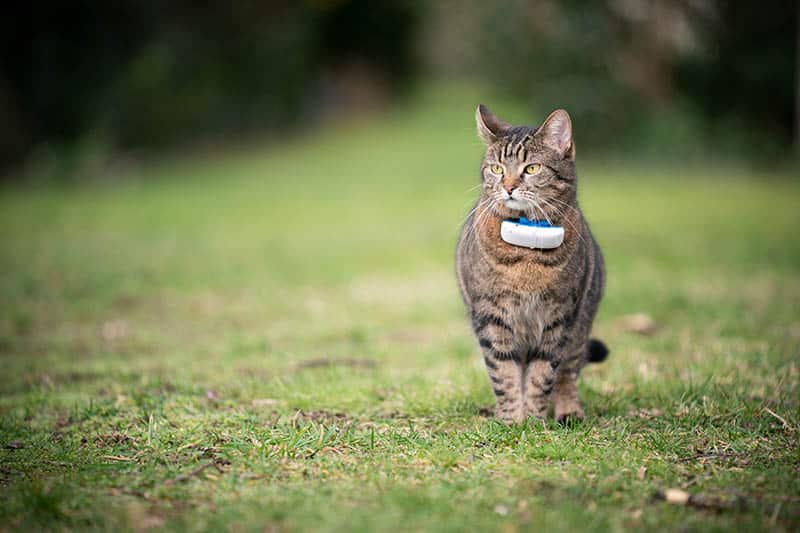
A GPS tracker can give you peace of mind because you can track your cat’s location at all times. Most trackers require a monthly subscription, but for some, you just pay for the device.
8. Take Your Cat for Walks
Not all cats might take to this, but try training your cat to walk on a harness and leash. This is about as safe as it gets, but remember what kind of animal you’re dealing with.
Cats aren’t known to be great walkers like dogs—expect slow meandering and exploring. Still, having your cat safe at the end of a leash is an excellent way for you both to enjoy the outdoors.
9. Carry Your Cat

If your cat is chill, they might do well in a backpack or even a stroller (which will likely garner interested passerby conversations)!
This way, your cat can enjoy the great outdoors while in the comfort of a kind of carrier. Many cat parents go on long hikes sporting their cat in a backpack and sometimes on their shoulders!
10. Build a Catio
If you haven’t heard of a catio, this might be a perfect option for your cat! It’s an enclosed space where your cat can hang out without causing damage to wildlife or becoming prey themselves.
You can purchase one already premade, which you can leave in your backyard and carry your cat to. There are also catios that you can make yourself. Some cat owners have the catio attached to a window or door of the house so the cat can go inside and outside whenever they want.

If Your Cat Is Indoors-Only
It’s usually recommended that cats remain indoors, and there are several things that you can do to keep your indoor cat entertained, fit, and healthy.
First, ensure that you have plenty of cat toys that your cat can play with on their own and that you can play with your cat. You’ll also need cat trees, scratching posts, and even simple things like boxes and paper. If you play with your cat every day, they get exercise and remain entertained, and you will form a stronger bond with your kitty.
Second, ensure that your cat has access to several windows, particularly ones that get plenty of bird action. You should also invest in indoor cat food, as they are more prone to gaining weight, which this kind of food targets.

Conclusion
Some cats aren’t happy unless they get to spend time outside, while others are perfectly happy remaining indoors.
If you opt to let your cat out to roam, be sure to follow these tips: Ensure that they are neutered or spayed, fully vaccinated, have ID, and are microchipped. Remember to add a cover or a bell to their collar to protect the birds and other local wildlife. Otherwise, try out a harness and leash, or invest in a cat backpack or a catio.
It’s important to remember that not all cats want to be outdoor cats. Some are quite terrified of being outside, so if you suspect that your cat is like that, just ensure that they get plenty of exercise and quality time in front of a window, and they’ll be happy.
Featured Image Credit: Giedriius, Shutterstock
